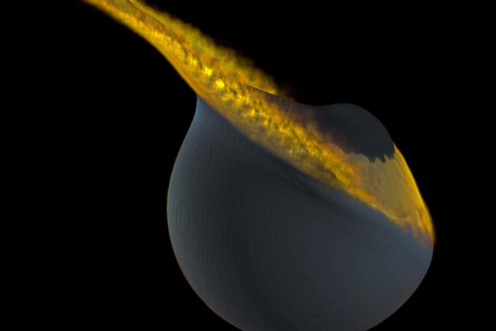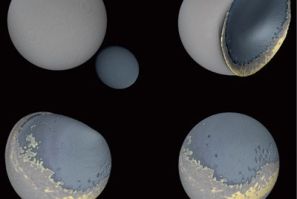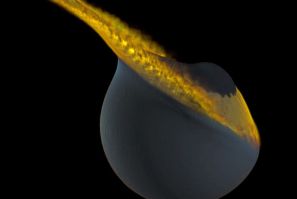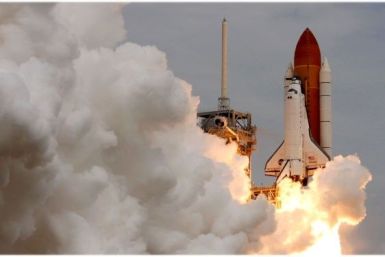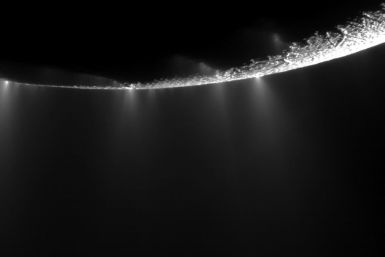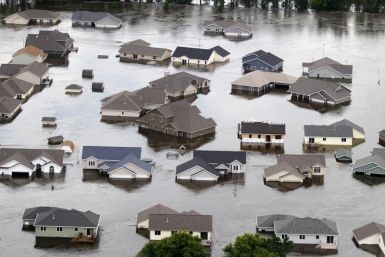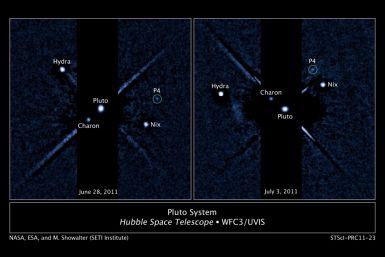Among the mysteries lying on the far side of the Moon are why it has a thick mountainous crust, while the near side which we see has low-lying lava plains and a much thinner crust than the far side. Scientists believe they may be able to finally explain the moon's asymmetry.
Earth once had two moons a small second moon until the two moons got smashed into each other to create a big lunar body.
Our planet's lopsided moon may have swallowed up its smaller sibling after a collision, which may have resulted in its asymmetric terrain, scientists propose. Erik Asphaug, a planetary scientist at the University of California, Santa Cruz, and his colleague Martin Jutzi recently wrote an article about the creation of the moon, which is published in the journal Nature.
Earth once might have had two moons, according to researchers.
A second moon orbited the Earth but a slow-motion collision with its bigger sister left our planet with one, scientists say. Astronomers believe that this collision, which lasted several hours, can explain the moon's asymmetry.
A new study is suggesting that Earth had two moons that crashed and formed one. Computer simulations are hinting that a second moon flattened itselt to the bigger moon, and this theory could explain why the two sides of the moon are so different from each other.
Paramount pictures on Wednesday announced that "Transformers: Dark Side of the Moon" has passed $1 billion in global box office revenue, which made it the third film to reach the benchmark in 2011.
MolsonCoors, maker of Coors Light and Blue Moon beers, posted lower than expected earnings on Tuesday, as commodity costs rose while sales dropped.
NASA, which has sent men to the moon and space for decades, may have to shelve its ambitious plans of sending astronauts to further reaches of space beyond the moon - it faces nearly $1 billion in cleanup costs for the deep chemical messes it has left behind at Kennedy Space Center and other launch centers.
NASA scientists believe that they might have found a lost 1967 Lunar Orbiter 2 spacecraft that took "the picture of the century" before crashing on the moon.
Planetary scientists examined information from European Space Agency's (ESA) Herschel space observatory and determined that Enceladus, the sixth largest moon of Saturn, is raining water vapors that form a huge donut-shaped ring around Saturn.
"There is no analogy to this behavior on Earth," said Paul Hartogh of Max-Planck-Institut für Sonnensystemforschung, the scientist who led the analysis that yielded the odd results.
For more than a decade scientists have pondered about Saturn's water source in the upper atmosphere, which they have found comes from the icy moon Enceladus.
ESA's Herschel space observatory has found that that the water given off from the moon Enceladus created a giant torus of water vapor around the planet. This latest discovery means that Enceladus is the only moon in the Solar System that is known to effect the chemical composition of Saturn, its parent planet.
The NASA Lunar Reconnaissance Orbiter (LRO) has made quite the discovery on the far side of the moon.
Drastic changes in global climate patterns will pose a dire threat to peace and security around the world, warns the head of the United Nations.
The 14-year mystery behind the water on the planet Saturn is now solved. Researchers have found that the planet's sixth largest moon named Enceladus is the source of a huge halo of water steam around Saturn.
The latest discovery around Saturn reveals that a moon covered with ice is providing water to the planet, creating a rain-showering halo. The water vapors are visible as tiger-like stripes of gas and ice that escape at the southern pole of the moon and become a main water-source vapor for Saturn's upper atmosphere.
Rain from Saturn?s moon has encapsulated the entire planet of Saturn in water vapor, according to observations released by the European Space Agency (ESA) on Tuesday, which finally pinpoints the water source in Saturn?s upper atmosphere.
Enceladus, Saturn's six-largest moon, was discovered to be raining over 550 pounds of water vapor every second toward Saturn.
Among mysteries lying on the far side of the Moon, which cannot be seen from Earth, are volcanoes as well, new photos from a NASA orbiter have revealed.
Scientists discover fourth moon for Pluto.





